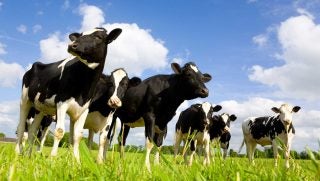Two porcine circoviruses have been isolated from pigs, both the Porcine circovirus 2a and Porcine circovirus 2b, which surfaced as a significant swine pathogen about 20 years ago.
Porcine circovirus 2 is now a worldwide endemic. Affected swine may experience mortality, poor growth, and weight loss, especially between 5 to 14 weeks old. Pigs may also exhibit enlarged lymph nodes, rashes, have difficulty breathing, jaundice, fever, stomach ulcers, or even sudden death.
Merck Animal Health announced yesterday that the CIRCUMVENT CML vaccine is now commercially available as part of its swine product portfolio.
CIRCUMVENT CML is the first ready-to-use, single-dose vaccine effective against disease caused by Porcine Circovirus Types 2a and 2d, Mycoplasma hyopneumoniae and Lawsonia intracellularis in pigs, three weeks of age or older. With CIRCUMVENT CML, veterinarians and producers have the convenience of vaccinating for three of the most important swine disease concerns, all in one bottle with no mixing or reconstituting.
“This vaccine complements the existing CIRCUMVENT PCV G2, PCV-M G2 and PORCILIS Ileitis product portfolio, providing swine veterinarians and producers with the additional option of vaccinating against disease caused by PCV2, Mycoplasma hyopneumoniae, and Lawsonia intracellularis all in one bottle,” said Jamie Lehman, D.V.M., swine technical services veterinarian, Merck Animal Health.
CIRCUMVENT CML is available in 100- and 500-ml vials. To learn more about other swine health products and vaccines, visit here.
“Merck Animal Health continues to shape the future of
animal health and well-being through the approval of CIRCUMVENT CML vaccine, which is our latest example of pioneering science that will help the industry improve both animal health and labor efficiency,” says Lehman.
»Related: Why do farmers use farrowing stalls?


